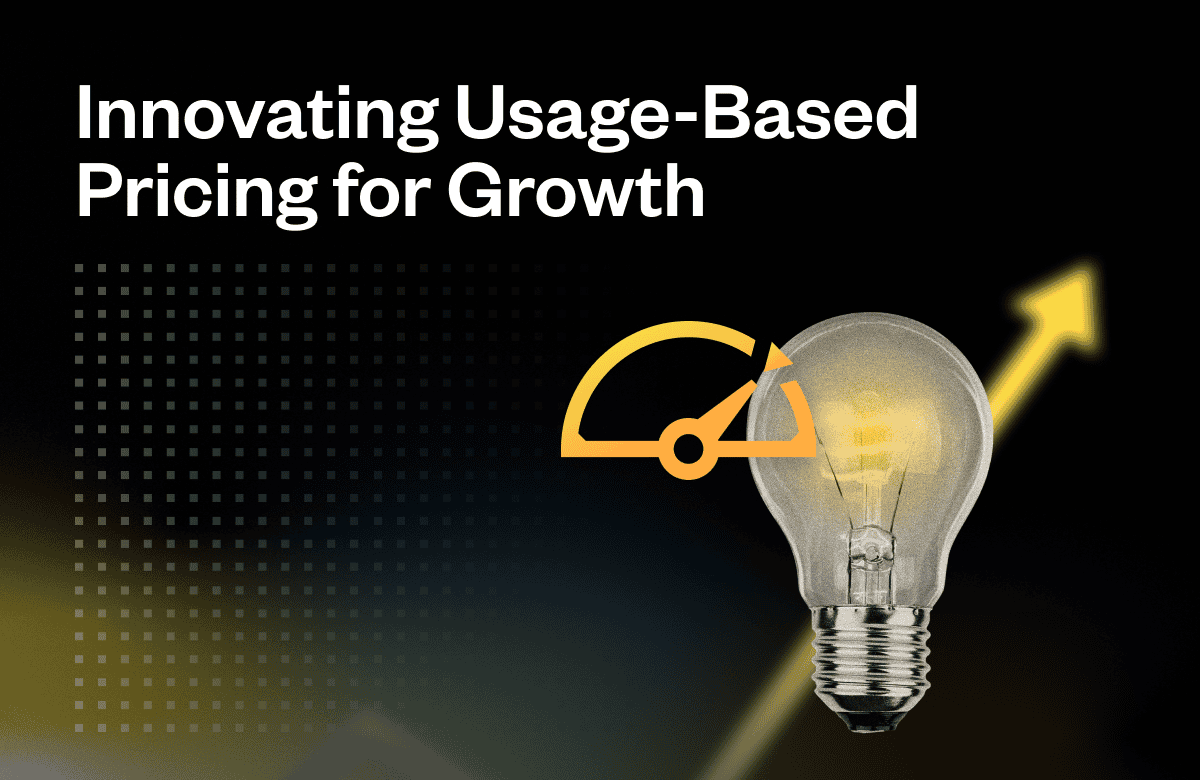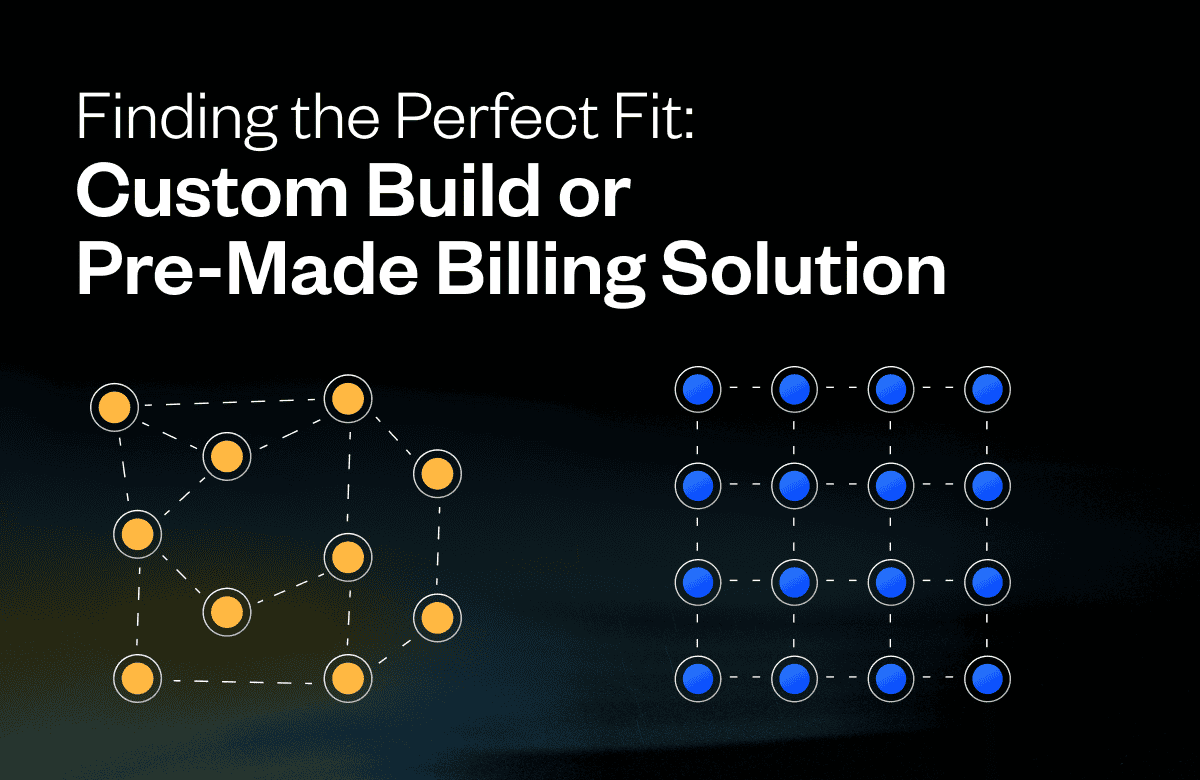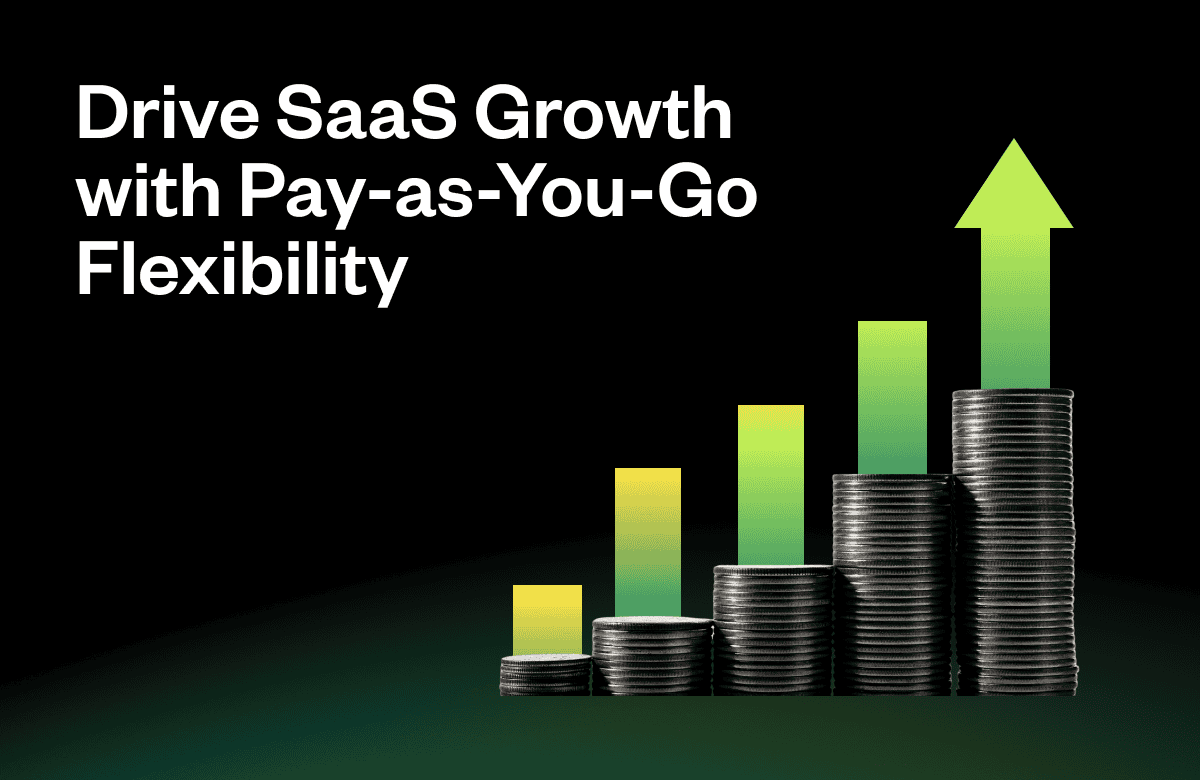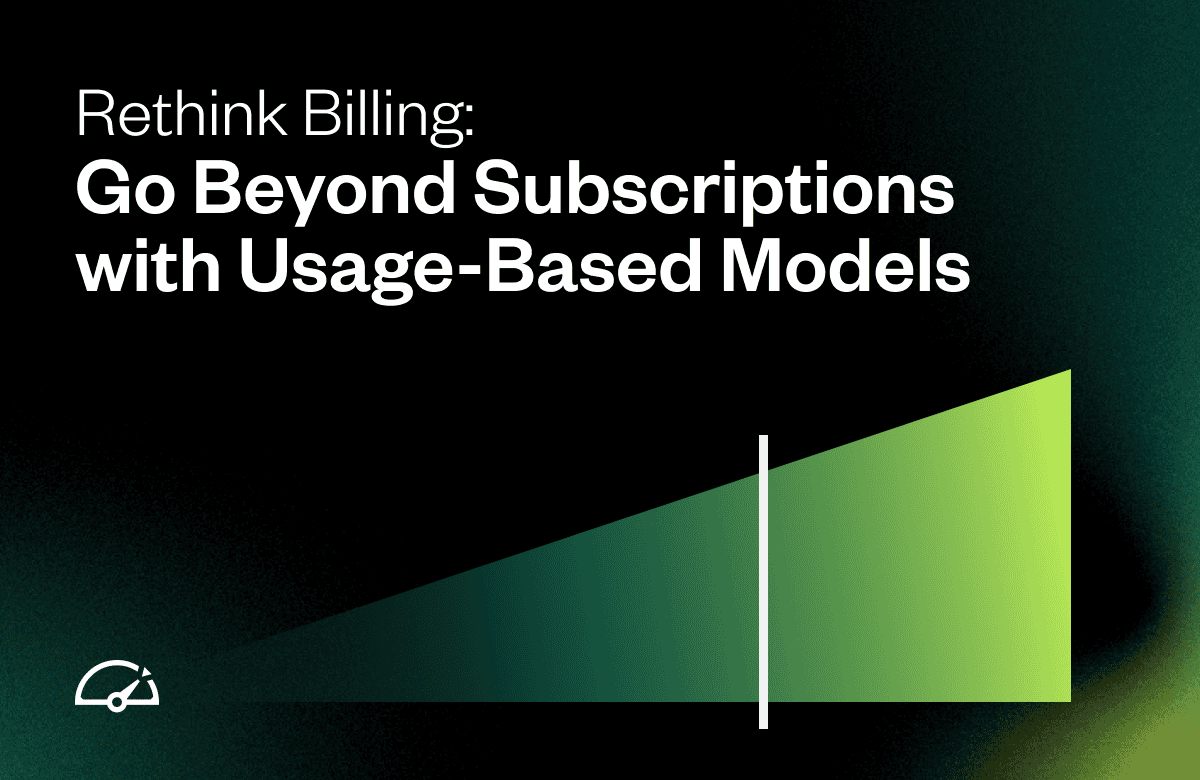More than twenty years ago, Salesforce disrupted the software space by implementing usage-based pricing. Instead of the traditional flat-rate subscription model, they offered access to their software by charging customers on a per-user, per-month basis. But did you know this wasn’t the earliest instance of usage-based billing? Michelin too offered usage-based pricing all the way back in the 1920s, leasing out their tires with a pay-per-kilometer program.
Metered pricing is not new. Most consumers in today’s modern world are well accustomed to some form of metered usage. (Just think about your electricity or phone bill.) However, usage-based pricing was introduced into subscription business models much more recently.
What has caused this onslaught of recurring subscription companies to deploy usage-based pricing models?
Data. Lots of data. We’re talking data that both the customer and the business are privy to.
Are Traditional Subscriptions Dead?
With talks that subscription-based pricing is dead, one has to wonder: where is pricing headed?
It’s true that as technology has evolved, the ability to capture, manipulate, and analyze data has forever changed the way companies understand end-users’ experience of their products. At the same time, customers also have access to how you’re pricing your product via their own calculated research into you and your competitors. (This is especially true in the B2B space.)
Usage-based pricing is here to stay. But, it has blurred the lines for many SaaS companies who are looking to build out effective pricing models. The task of choosing price metrics that reflect the value experienced by your customer is daunting, making industry-leading usage-based pricing models difficult to implement.
What’s important to remember is that usage-based pricing sits on a spectrum from uber simple to highly complex. When implementing usage-based pricing, it could make sense to stick with simple metered billing or jump all the way to a multi-attribute, events-based model. Your usage-based pricing model can be as simple or complex as the software you offer. Ultimately, where you choose to sit on the spectrum is dictated by your SaaS offering.
Let’s take a look at 3 different SaaS companies deploying usage-based pricing today.
3 Levels of Complexity in Usage-Based Pricing
Level 1: Mailgun charges per unit.
Mailgun, a B2B SaaS offering built for developers, provides an API-first functionality that enables end-users to send, receive, and track email effortlessly. By serving over 225,000 businesses worldwide, their usage-based pricing tiers are worth talking about!
MailGun offers 4 tiers of usage-based pricing: Flex, Foundation, Growth, and Scale. Each plan is defined by the amount of emails sent per month with overage buckets to support excess emails without jumping tiers. Their lowest tier offers just the basics while their higher tiers offer more features, such as 24/7 support, chat support, log retention, etc.
But regardless of which tier customers choose, they’re still charged based on one of the simplest usage-based billing models available: price per unit consumed. However, opting for one of the simpler usage-based pricing models doesn’t stunt their flexibility, as they use this model in very creative ways.
For example, their “Pay As You Grow” is a 3-month freemium option which allows customers to send 5,000 emails per month at no charge. However, anything over 5,000, the overage is tiered at $0.80 per every 1,000 emails. If users decide to continue with Mailgun, they simply pay for what they use, billed according to the already-familiar model of $0.80 per 1,000 emails.
This model increased product adoption by allowing first-time customers to try their service with no commitment for the first 3 months.
What to read more? Get Data-Driven Pricing StrategiesBusiness Email*
Level 2: Snowflake prices based on more than 1 variable
Snowflake, the maker of The Data Cloud, is a global network where thousands of organizations mobilize data with near-unlimited scale, concurrency, and performance. Unlike MailGun, they charge customers based on 2 usage-based attributes: storage space and processing units consumed.
Snowflake gets the most out of multi-attribute usage-based pricing by charging based on their two biggest value metrics.
Their clear-cut pricing models don’t allow for charges on idle compute time—meaning customers truly pay for the actual consumption of their product (when the data is actually being computed). In addition, there are no added usage quotes or hidden price premiums. Snowflake’s customers pay only for what they use, leading to happier customers that can truly scale their cloud elasticity with ease.
This model allows Snowflake to keep their services simple, cost-effective, and price-efficient, without missing out on the complexity needed to cover their own operating costs. That their customers don’t have to worry about overages or disruption in service. Instead, they can focus on leveraging their data analytics and developer-focused engineering projects to support growth.
Level 3: Datadog employs usage galore with multiple usage-based pricing models
Datadog is a monitoring, security and analytics platform for developers, IT operations teams, security engineers, and business users in the cloud age. Their SaaS platform integrates and automates infrastructure monitoring, application performance monitoring, and log management to provide unified, real-time observability of a customer’s entire tech stack.
Datadog has multiple cloud offerings, each with a unique usage-based pricing plan to better accommodate their users’ needs. Their most common pricing points are hosts, containers, custom metrics, devices, serverless functions, and an AWS Fargate task, and fees are based on usage within a calendar month.
What makes their pricing unique is that they charge some of their services using high watermark plans (HWMP) which are hourly measurements ordered from the highest to the lowest at the end of the month. Datadog charges based on the eighth highest measurement recorded. Besides a HWMP, they also offer a hybrid monthly/hourly plan (MHP), where they will charge a minimum monthly commitment, and for any hours above that commitment, they tag on an hourly rate. Datadog’s Network Performance Monitoring uses event streaming to measure a flow of data that is essentially traffic sent and received between a source and destination over a 5-minute period.
These granular metrics empower Datadog to offer truly unique pricing per customer. This makes them one of the most competitively positioned companies in the bloated marketplace of cloud infrastructure SaaS providers.
Datadog’s pricing model is the epitome of true value-based pricing, because their customers are only paying for exactly what they use.
Events-Based Billing: Leveraging User Actions to Provide Value-Based Billing
As you can see from the examples above, usage-based billing is widely deployed by the biggest companies in B2B SaaS. The ability to bill customers based on how they consume your product is a powerful and non-arbitrary pricing methodology which effectively increases usage and revenue.
However, Events-Based billing takes usage-based billing to another level by attributing your pricing metrics on real-time events happening within your application. It’s the future of SaaS billing.
Take Datadog’s pricing for Log Management as an example. If they employed events-based billing, Datadog could potentially rate their archives to AWS S3 vs. Azure Blob Storage vs. Google Cloud Storage independently, while retaining all of that usage as “Archives.” In other words, customers using Log Management could be simultaneously segmented into multiple price points (one for each storage service), even while using the same attribute (archives).
The benefits of an events-based approach vastly outstrip those of a pure consumption-based pricing model. The event data which SaaS businesses are already collecting provides the agility to iterate pricing based on the changing needs of the market and end customer alike.
By leveraging user actions to provide value-based billing, both you and your customers end up winning.
| Metered Billing | Event-Based Billing |
| Periodically batch and send data to your billing system. | Stream data in real-time. |
| Aggregate and report usage at the end of a billing period. | View real-time reporting, visualizations, and predictive analytics. |
| Multiple third-party tools gather, process, and store usage data. | One application gathers, processes, stores, and bills on usage data. |
| Bill on a single, usage-based attribute. (e.g. “minutes watched”) | Build multidimensional pricing models. (e.g. “minutes watched in a country at a time by a user”) |
| Invest in technical resources whenever you want to change your billing model. | Change the way you bill at any time without development support. |
Preparing for the Next Evolution in Pricing & Billing
For SaaS companies who have implemented usage-based pricing, the journey toward effective implementation of Events-Based Billing is halfway complete. You already have effective tools and processes for gathering the necessary data necessary to measure and price your offering based on specific usage. You just need a way to bill on it.
Learn more about Maxio’s out-of-the-box events-based billing and subscription solution. Find out how we can empower your business to take the next step in value-based pricing or talk to an expert today.




